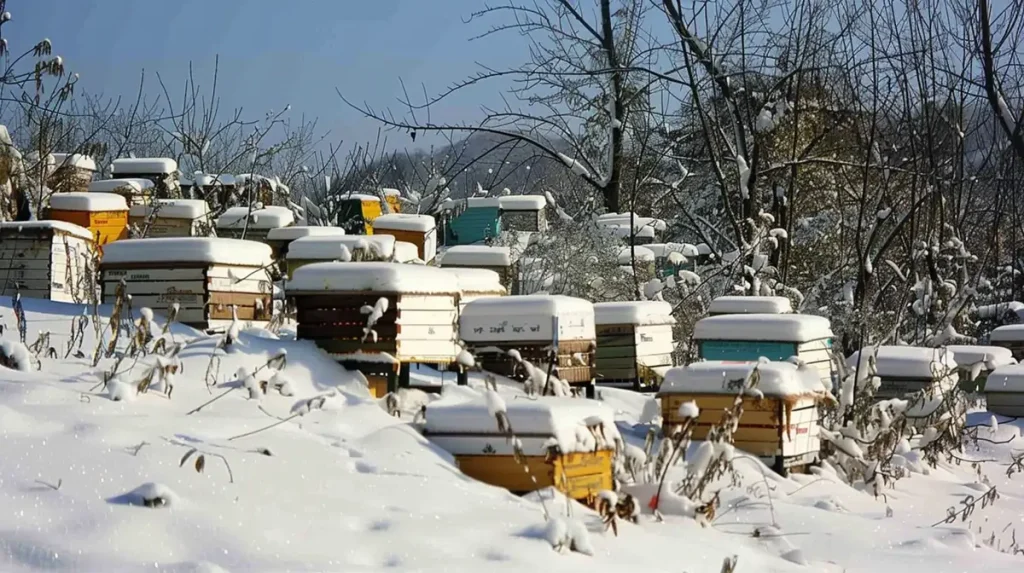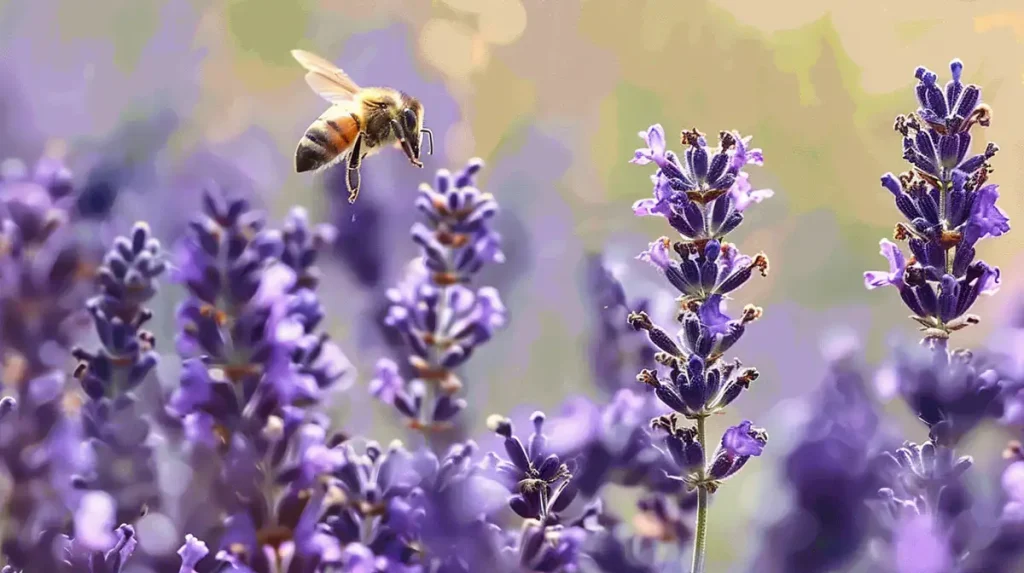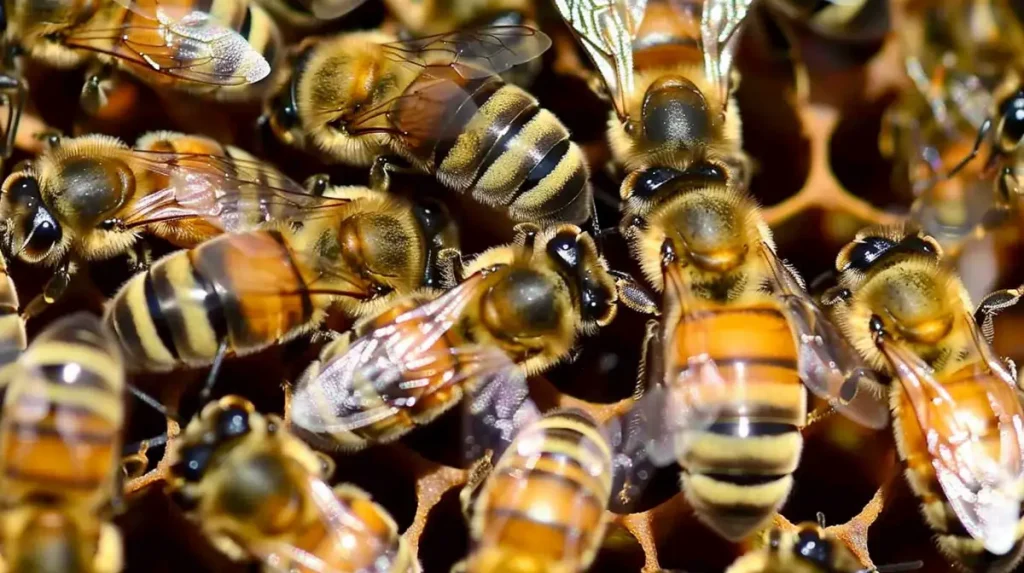Table of Contents
Did you know that beekeeping is a year-round exercise? Even in locations far from the equator, there is something to do with your hives every month of the year. This leads to some confusion as to the start of the beekeeping year. So to clear up the confusion, I have put together a rather lengthy post that goes through the beekeeping calendar month-by-month.
As my posts are read around the world, I have made an effort to account for both hemispheres. So you’ll notice as you go through the calendar that each entry includes two months, one for the northern hemisphere and the other for the southern. These will be designated by (N) and (S).
The Start of the Season
It is generally accepted that the start of the beekeeping season is when those bees that survived the winter begin emerging and making preparations for new hives filled with new eggs. In the northern hemisphere, this generally occurs somewhere around mid-April. You are looking at mid-October in the southern hemisphere.
Note that the closer you are to the equator, the sooner in the calendar year the beekeeping season begins. In some locations near or at the equator there really is no definable start to the season. Bees are active 12 months of the year. Also note that the start of the season is NOT the same as the start of the year. The beekeeping year doesn’t start until August in the northern hemisphere and February in the southern. More on that later.
With all of that out of the way, let’s go through a typical beekeeping calendar. This calendar applies to most moderate climates, well away from the equator, that experience four distinct seasons every year.
January (N) / July (S)
This time of year constitutes the dead of winter. It is when temperatures are coldest and bees are clustering together in their hives in hopes of staying warm. They don’t eat much food right now, either. On days when the temperatures warm up, you might see a limited amount of activity around the hive.
Temperatures hovering around 10°C are warm enough to prompt some bees to leave the nest for a cleansing flight. If there are lots of bee carcasses lining the bottom of the hive, some of the surviving workers may drag them out as well. If you’ve ever seen dead bees in the snow, this is why.

The two big things to pay attention to in January/July are snow and wind. Make sure snow has not blocked the entrances to your hives, as entrances are the main source of air for your bees. In terms of wind, make sure winter winds have not disturbed the tops of your hives. If they have, re-secure the tops right away.
This is the time of year to order new kits as well. Don’t wait until the end of January or July if you’re looking for a new queen and/or some additional workers. Stocks tend to run dry by the end of the month.
February (N) / August (S)
You’re half-way through winter by the time February/August arrives. That means longer days and, possibly, some warmer temperatures. This is the time of year when the queen will start laying more eggs. Unfortunately, it is also the time of year when bees start dying of starvation in larger numbers.
Checking your hives will reveal that surviving bees have moved closer to the top of the hive chamber. On colder days, the bees will be largely inactive. On warmer days you will see the same kind of activity outside the nest that you observed in January: cleansing flights and carcass removal.
You may be tempted to open your hives just to see how things are going. If so, wait until temperatures get to 10°C or higher. And even when you do open the hives, do so only for brief moments of time. Exposing your bees to too much cold air could be devastating.
- Carter, Anthony (Author)
- English (Publication Language)
- 194 Pages - 02/28/2024 (Publication Date) - Independently published (Publisher)
You may also discover that your bees do not have enough food to make it through until spring. This is the time for emergency feeding. You can use dry sugar, hard candy, and even sponges soaked with sugar water. You can use honey if you have any left over from autumn harvests.
March (N) / September (S)
March/September is the worst time of year for starvation. Assuming there is not enough honey in the hive and you did not succeed in your emergency feeding efforts, your hives could experience quite a bit of loss about now. Don’t panic. Die-outs are very normal this time of year. Remember that in addition to bees dying of starvation, others will die of old age.
By the time the first day of spring arrives, your queen should be laying eggs at full capacity. Every day that’s warm enough will see workers buzzing around doing what they do. If this is the year that any of your hives are big enough to split, there will be workers out and about hunting for a new place to build a hive.
March/September is a good time to begin opening your hives and pulling frames out. Again, make sure the temperature is above 10°C. Also note that bees are particularly aggressive at this time due to a lack of food and their preparations for spring. So just be careful.
April (N) / October (S)
This is the time of year that we typically call the start of the beekeeping season. Nectar starts flowing, the queen is in full swing, and the hive is rebuilding its numbers quite rapidly. As such, this is the busiest time of year for beekeepers.
This is when you will be opening all your hives and thoroughly inspecting them. If your queen is not doing as well as she should, may have to replace her. Also be sure to check on your emergency feeding methods from earlier in the year. You can remove them if the bees are no longer using them.
May (N) / November (S)
Spring is nearing an end and your bees are in full swing. Workers are bringing in plenty of nectar and pollen, the hive continues to expand, and brood chambers are filling up quickly. Be on the alert if you notice brood chambers looking especially congested. This could be a sign of an impending swarm.
Swarming is normal bee activity and nothing to be alarmed about. It is a good idea to have a few empty hives ready to go in the spring just in case. That way you can capture your own swarms rather than letting them go. As a side note, swarming is a sign of growth and expansion. It is not aggression. If your hives are swarming, that means your bees are multiplying.
June (N) / December (S)
By the time mid-June/December arrives, the threat of swarming has greatly subsided. Your biggest responsibility now is just maintenance. You will be checking your hives regularly just to make sure things are running smoothly. Assuming hives are not under threat of disease or invasive species, your beekeeping efforts this time of year should be pretty relaxed.

July (N) / January (S)
July/January brings summer and, with it, more activity outside the nest. Nectar is no longer as plentiful as it was in the spring, so your bees have to work much harder to find food. They need to feed existing larvae and start stocking up for winter before the nectar supply completely dries up.
This is the time of year when the honey really starts flowing. So be sure to check your hives and clean them on a regular basis. Also note that this is the time of year to begin mite treatment. You do not want to wait much longer, but you could stand to wait until the end of the honey harvest.
August (N) / February (S)
August/February is considered the start of the beekeeping year. Why? Because what you do this time of year directly influences how well your hives do next season. Do things correctly and your bees will overwinter well enough to thrive again come spring.
Requeening, when necessary, typically takes place in August/February. Do not wait until September/March to requeen. The idea is to have a productive queen in place that is young and strong enough to survive the winter and begin laying eggs in full force in the spring.
September (N) / March (S)
The start of the beekeeping year is but a month-old, but the season is winding down. The bees are busily gathering the remaining nectar they can find in anticipation of winter feeding. Those workers that will carry the hive through winter are being laid as eggs right now. Those eggs are generally found in the bottom of the brood.
Now is the time to begin preparing your hives for the winter. The days are getting colder, so you are going to have fewer opportunities to get into the hives. Check brood quality, make sure you can find the queen, and begin securing your hives against harsher weather.
October (N) / April (S)
Activity outside of the hives is significantly slower now. The queen lays fewer eggs and there is less food to gather, so workers tend to ‘hang around the house’, so to speak. Your goal now is to encourage the bees to fill the upper brood chamber while forcing the queen down. This will give her plenty of room for her autumn eggs.
Outside the hives, start erecting your windbreaks. Also make sure you are inspecting hives in search of any way moisture might enter. Seal up any entry points you find.
November (N) / May (S)
Colder temperatures keep your bees clustered in their hives for the most part now. They may not be in full winter cluster quite yet, but they should be close. Priorities now include completing the winterization of your hives and tending to food supplies.
December (N) / June (S)
With the arrival of December/June comes winter. By now, all your hives should be in winter cluster. The only time you should see bees outside the hive is when temperatures get warm enough for cleansing flights. There is not much to do now, but you may want to quickly take a peek inside the hives on days when temperatures are warm enough.
When is Beekeeping Season – Conclusion
In conclusion, beekeeping is a year-round activity that requires careful planning and attention to detail. The beekeeping year starts in the winter, with preparations for the coming spring and summer months. It is during this time that hives are inspected and repaired, and necessary equipment is ordered or constructed. As spring approaches, beekeepers must be vigilant in monitoring their hives, ensuring that their colonies are healthy and preparing for the upcoming honey flow. Throughout the summer, beekeepers will be busy with tasks such as honey extraction, pest management, and preparing their hives for the colder months ahead. The fall marks the beginning of the beekeeping year’s end, with the final harvest of honey and preparations for winter. By understanding the timing and tasks associated with each season, beekeepers can ensure the health and productivity of their colonies. With proper care and attention, beekeeping can be a rewarding and beneficial activity for both the bees and the beekeeper.
Looking to up your beekeeping game? Check out our latest product recommendations so you can take things to the next level!
Introducing The Top 12 Best Beekeeping Veils For 2024
Introducing The Top 20 Best Beekeeping Gloves For 2024
Introducing The Absolute Best Beekeeping Suits For 2024
The 15 Top Beekeeping Books for 2024
The Top 11 Honey Extractors for 2024
The Top 12 Mason Bee Houses for 2024
Beekeeping Disclaimer:
Beekeeping, like any agricultural activity, involves inherent risks. It is important to understand these risks and take appropriate measures to mitigate them.
Potential risks associated with beekeeping include:
- Bee stings: Honey bees are generally not aggressive but can become defensive if they feel threatened or their hive is disturbed. Bee stings can cause allergic reactions or even anaphylaxis in some individuals, which can be life-threatening. It is important to wear protective clothing and follow best practices when handling bees to minimize the risk of stings.
- Diseases and pests: Bees can be vulnerable to various diseases and pests, including mites, viruses, and bacterial infections. These can have significant impacts on bee colonies, leading to reduced honey production or even colony collapse. It is important to monitor hives regularly and take appropriate measures to prevent and treat diseases and pests.
- Weather conditions: Extreme weather conditions, such as drought or cold temperatures, can affect the health and productivity of bee colonies. It is important to ensure that hives are appropriately sheltered and provided with adequate food and water.
- Environmental hazards: Bees can be affected by environmental hazards such as pesticide exposure, pollution, and habitat loss. It is important to be aware of these hazards and take appropriate measures to protect bee colonies and promote healthy environments for bees.
- Legal requirements: Beekeeping may be subject to local, state, or national regulations, such as registration or inspection requirements. It is important to be aware of these requirements and comply with them.
While beekeeping can be a rewarding and enjoyable activity, it is important to be aware of the potential risks and take appropriate measures to mitigate them. By following best practices and staying informed about the latest developments in beekeeping, beekeepers can help ensure the health and productivity of their hives and contribute to the well-being of bee populations worldwide.
Last update on 2024-04-17 / Affiliate links / Images from Amazon Product Advertising API


